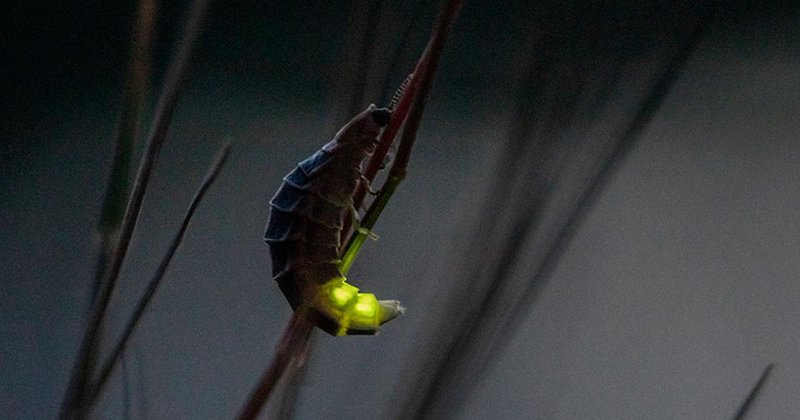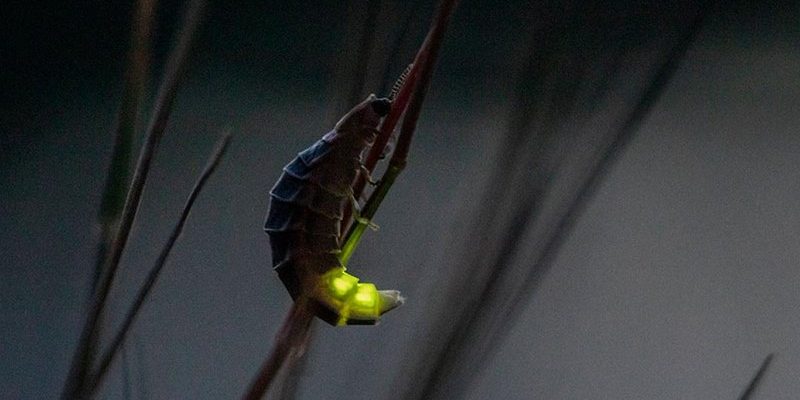
Light pollution refers to artificial light that brightens the night sky, disrupting the natural rhythms of wildlife. Think of it like music that’s turned up too loud; it drowns out the more delicate sounds of nature. For glow worms, who rely on darkness to thrive and attract mates, this “noisy” environment can make life a lot tougher. In this article, we’ll explore how light pollution affects glow worms and what we can do to help preserve these enchanting little lights of the night.
What Are Glow Worms and Why Do They Glow?
Glow worms are fascinating creatures, not actually “worms” but larvae of beetles, specifically in the family Lampyridae. They’re famous for their bioluminescent glow, which they produce through a chemical reaction in their bodies. This glow serves a critical purpose: it attracts mates and lures unsuspecting prey, like small insects.
The soft, blue-green light emitted by glow worms can be quite magical. However, their glow isn’t just for show; it’s an essential part of their life cycle. In the dark of night, their glow is easy to see, serving both as a beacon for potential partners and as bait for their next meal. But when our nights get too bright, this natural glow gets overshadowed.
The Impact of Light Pollution on Glow Worms
You might be wondering, “How exactly does light pollution affect glow worms?” The truth is, artificial lighting disrupts their natural behaviors and cycles. For starters, it makes it harder for them to communicate with each other. Glow worms rely on their glow to attract mates, and when competing with the bright lights of urban areas or street lamps, their signals can get lost in the noise.
Moreover, glow worms are nocturnal, meaning they need darkness to thrive. When the night sky is filled with artificial light, it interferes with their feeding and mating habits. This can lead to decreased populations over time, as they struggle to find mates and food. A bright night isn’t just a nuisance; it’s a threat to their survival.
How Light Pollution Affects Mating and Feeding
Let’s break down a bit further how light pollution impacts glow worms. When these little creatures glow to attract mates, they must compete against the brightness of streetlights and other artificial sources of light. Imagine trying to shout over loud music to get someone’s attention—frustrating, right? Glow worms face this same challenge every night.
In terms of feeding, glow worms typically wait in their silk threads for insects to be lured in by their glow. However, if the surrounding area is lit up, potential prey might be deterred from entering that space because they sense danger or see other competing lights. Consequently, glow worms are left with fewer food options, which can lead to smaller and weaker populations.
Local Ecosystems and Glow Worms
The effects of light pollution extend beyond just individual glow worms; it can impact entire ecosystems. Glow worms play a role in the local food web, providing food for birds and other wildlife. When their populations decline due to light interference, this can have a ripple effect throughout the ecosystem.
Moreover, glow worms are indicators of a healthy environment. Their presence often signifies a balanced ecosystem. When artificial light disrupts their habitat, it’s a signal that something isn’t right. Preventing light pollution isn’t just about saving glow worms; it’s about protecting the entire environment and ensuring that all living beings can thrive.
Strategies for Reducing Light Pollution
So, what can we do to help glow worms? There are several strategies to reduce light pollution in our communities. First, we can push for better outdoor lighting practices. Using motion sensors or timers can reduce the time lights are on, giving glow worms a chance to thrive in the darkness they need.
Second, opting for “dark sky” compliant fixtures that direct light downward can minimize the spread of unwanted light into natural areas. This way, glow worms can light up the night without competing with artificial sources.
Finally, raising awareness is key. Sharing information with our friends, family, and community about the importance of reducing light pollution can help everyone understand its impact on local wildlife, including our little glow worms.
What You Can Do to Help Glow Worms
You don’t have to be a scientist to make a difference. Here are some simple actions you can take at home:
- Turn Off Unused Lights: Keep outdoor lights off when you don’t need them.
- Use Warm LED Bulbs: They create less blue light, which is less disruptive for wildlife.
- Advocate for Nature: Join local groups focused on preserving natural habitats.
- Educate Others: Share what you know about light pollution and its effects.
Every little change can create a positive impact on glow worm populations and help restore the magic of the night sky.
The Future of Glow Worms in a Brightening World
As we move forward, the challenge of balancing human needs with wildlife conservation continues to grow. Light pollution isn’t going away anytime soon, but there’s hope. By making small adjustments in our lighting habits and advocating for better practices, we can help pave the way for a healthier environment—not just for glow worms but for all the creatures that call our planet home.
Ultimately, the goal is to ensure that the gentle glow of these remarkable insects can continue to light up our nights for generations to come. After all, there’s something genuinely enchanting about watching nature unfold in its unaltered, natural state.
In the end, let’s work together to banish the excess light and bring back the night so these little luminaries can shine in their full glory. Together, we can ensure that future generations will also have the chance to witness the beauty of glow worms lighting up the darkness—one glow at a time.

